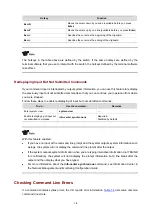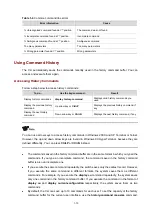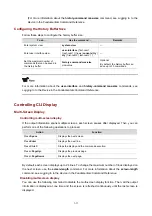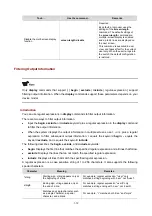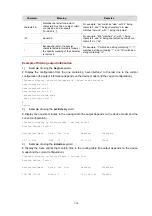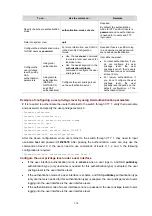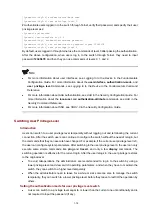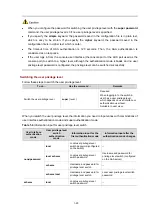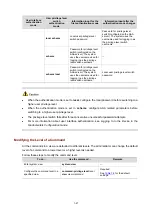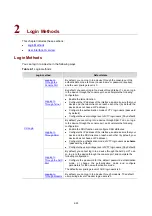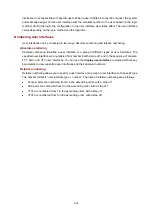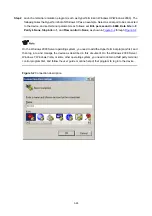
1-14
Character
Meaning
Remarks
character1\w
Matches
character1character2.
character2
must be a number, letter,
or underline, and \
w
equals
[^A-Za-z0-9_].
For example, “v\w” matches “vlan”, with “v” being
character1,
and “l” being
character2.
v\w also
matches “service”, with “i” being
character2.
\W Equals
\b.
For example, “\Wa” matches “-a”, with “-” being
character1,
and “a” being
character2, but does not
match “2a” or “ba”
.
\
Escape character. If a special
character listed in this table follows \,
the specific meaning of the character
is removed.
For example, “\\” matches a string containing “\”, “\^”
matches a string containing “^”, and “\\b” matches a
string containing “\b”.
Example of filtering output information
1)
Example of using the
begin
keyword
# Display the configuration from the line containing “user-interface” to the last line in the current
configuration (the output information depends on the device model and the current configuration).
<Sysname> display current-configuration | begin user-interface
user-interface con 0
user-interface aux 0
user-interface vty 0 4
authentication-mode none
user privilege level 3
#
return
2)
Example of using the
exclude
keyword
# Display the non-direct routes in the routing table (the output depends on the device model and the
current configuration).
<Sysname> display ip routing-table | exclude Direct
Routing Tables: Public
Destination/Mask Proto Pre Cost NextHop Interface
10.1.1.0/24 OSPF 10 2 10.1.1.2 Vlan2
3)
Example of using the
include
keyword
# Display the route entries that contain Vlan in the routing table (the output depends on the device
model and the current configuration).
<Sysname> display ip routing-table | include Vlan
Routing Tables: Public
Destination/Mask Proto Pre Cost NextHop Interface
192.168.1.0/24 Direct 0 0 192.168.1.42 Vlan999
Summary of Contents for SR6600 SPE-FWM
Page 112: ...6 101...










